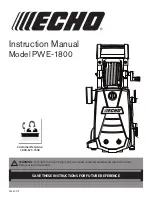
14 / EN
Washing Machine / User Manual
4.2 Preliminary preparation
A
Please read the "Safety Instructions" section first!
4.2.1 How to sort laundry
• Sort laundry according to type of fabric, colour, and degree of soiling and allowable water temperature.
• Always observe the instructions given on the garment care labels.
4.2.2 How to prepare clothes for washing
• Laundry items with metal attachments such as, underwiring, belt buckles or metal buttons will damage the
product. Remove the metal pieces or wash such clothes by putting them in a laundry bag or pillow case.
• Take out all substances in the pockets such as coins, pens and paper clips, and turn pockets inside out and
brush. Such objects may damage the product or cause noise problem.
• Put small size clothes such as infant’s socks and nylon stockings in a laundry bag or pillow case.
• Place curtains in without compressing them. Remove curtain attachment items. Curtain attachment items
may cause pulling and tearing on the curtain.
• Fasten zippers, sew loose buttons and mend rips and tears.
• “Wash “Machine washable” or “Hand washable” labelled products only with an appropriate programme.
• Do not wash colours and whites together. New, dark coloured cottons release a lot of dye. Wash them
separately.
• Tough stains should be treated properly before washing.
• Wash trousers and delicate laundry turned inside out.
• Laundry that are subjected to materials such as flour, lime dust, milk powder, etc. intensely should be
shaken off before placing into the product. Such dusts and powders on the laundry may build up on the
inner parts of the product in time and can cause damage.
4.2.3 Tips for energy and water saving
Following information will help you use the product in an ecological and energy/water-efficient manner.
• Operate the product in the highest load capacity allowed for the programme you have selected, but do not
overload it. See "Programme and consumption table"
• Observe the temperature instructions on the detergent packaging.
• Wash slightly soiled laundry at low temperatures.
• Use faster programmes for small quantities and lightly soiled laundry.
• Do not use prewash and high temperatures for laundry that is not heavily soiled or stained.
• If you plan to dry your laundry in a dryer, select the highest spin speed recommended during washing
process.
• Do not use more detergent than the recommended amount on the detergent packaging.
4.2.4 How to add laundry
1 Open the loading door.
2 Put the laundry items into the product in a loose manner.
3 Push the loading door to close until you hear a interlocking sound. Ensure that no items are caught in the
door. The loading door is locked while a programme is running. The door lock will open a few minutes after
the washing programme has ended. Then you can open the loading door. If the door does not open, apply
the solutions provided for “Loading door cannot be opened” error in the Troubleshooting section.
4.2.5 Correct load capacity
The maximum load capacity depends on the type of laundry, the degree of soiling and the desired washing
programme.
The product automatically adjusts the water amount according to the weight of the laundry put inside it.
C
Follow the instructions in “Programme and consumption table”. When the appliances is overloaded product’s washing
performance will drop. Moreover, noise and vibration problems may occur.















































